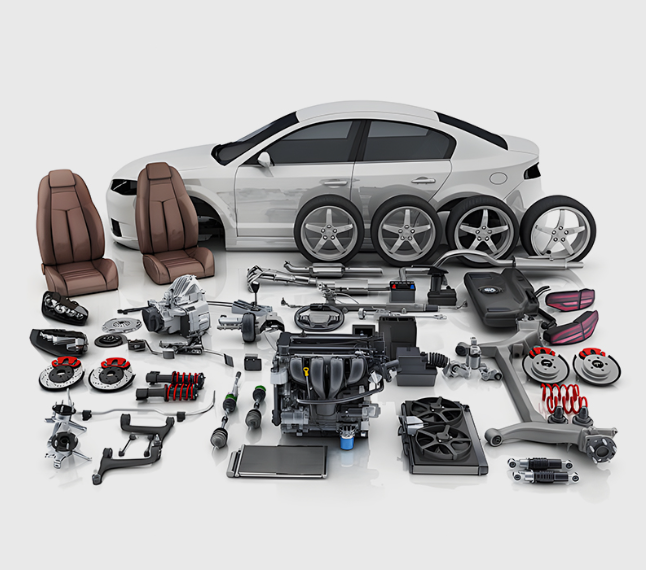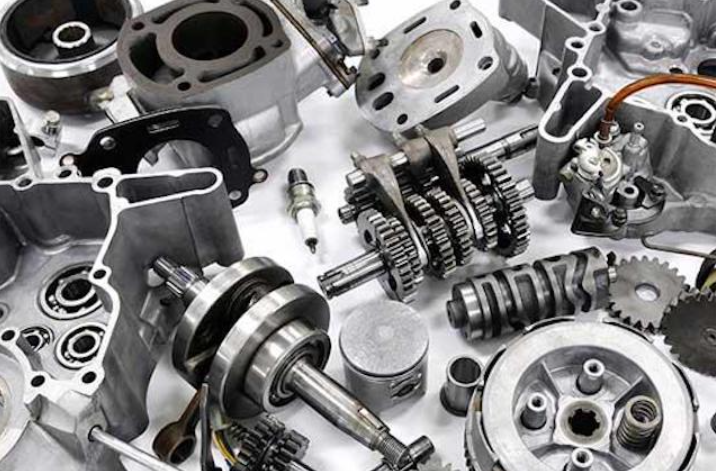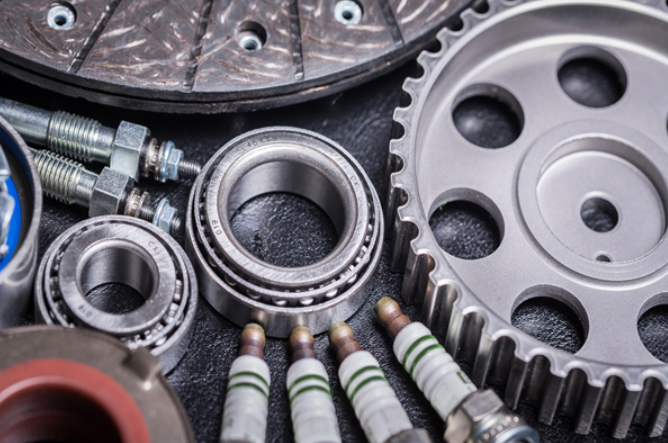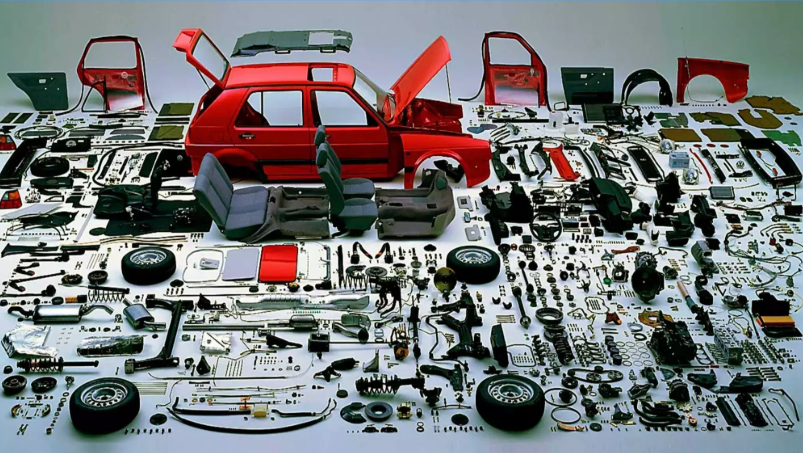The manufacturing of automobile parts encompasses a diverse range of production techniques and advanced technologies designed to meet the automotive industry’s stringent requirements for precision, durability, and cost-efficiency. Modern automotive component production utilizes computer-controlled machining centers capable of holding tolerances within ±0.01mm for critical engine and transmission components, with high-speed CNC machines processing aluminum alloys at surface speeds exceeding 1,000 meters per minute using diamond-coated cutting tools. Stamping presses with capacities up to 2,500 tons transform sheet metal into body panels through progressive dies that perform multiple forming operations in a single stroke, achieving production rates of 12-15 parts per minute while maintaining dimensional consistency within 0.2mm across production runs. Foundry operations employ advanced sand casting and die casting processes to produce engine blocks and cylinder heads, with molten aluminum poured at precisely controlled temperatures between 680-750°C to ensure optimal material properties in the final components.
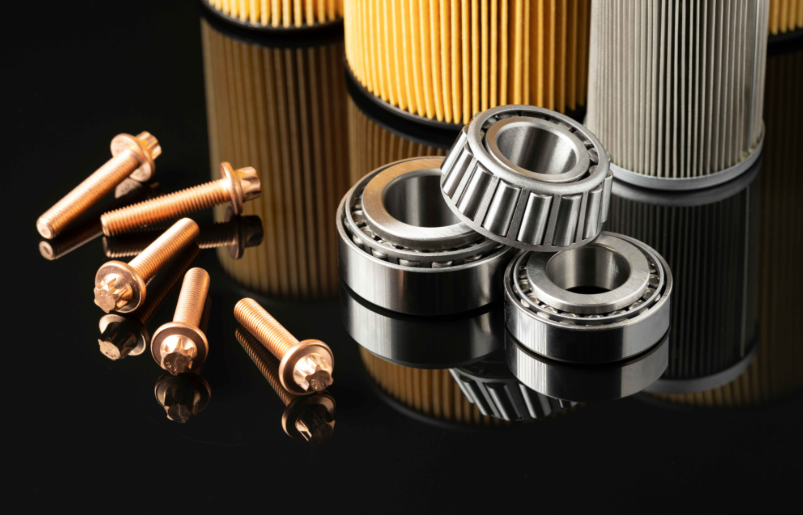 Plastic injection molding technologies manufacture interior trim pieces and under-hood components using high-pressure machines (1,500-3,000 bar clamping force) that inject engineered polymers into temperature-controlled molds at cycle times as short as 15-30 seconds. Robotic welding cells with laser vision systems assemble chassis components with weld seam accuracies of ±0.1mm, utilizing resistance spot welding, MIG, and laser welding processes that meet automotive structural integrity standards. Powder coating and electrodeposition paint systems provide corrosion protection for metal parts through multi-stage pretreatment processes followed by electrostatic application of coatings cured at 160-200°C to achieve film thicknesses of 60-120μm with excellent adhesion and chip resistance.
Plastic injection molding technologies manufacture interior trim pieces and under-hood components using high-pressure machines (1,500-3,000 bar clamping force) that inject engineered polymers into temperature-controlled molds at cycle times as short as 15-30 seconds. Robotic welding cells with laser vision systems assemble chassis components with weld seam accuracies of ±0.1mm, utilizing resistance spot welding, MIG, and laser welding processes that meet automotive structural integrity standards. Powder coating and electrodeposition paint systems provide corrosion protection for metal parts through multi-stage pretreatment processes followed by electrostatic application of coatings cured at 160-200°C to achieve film thicknesses of 60-120μm with excellent adhesion and chip resistance.
The production of precision gears and drivetrain components involves specialized gear hobbing and grinding machines that maintain tooth profile accuracy to AGMA 10-12 quality standards, with heat treatment processes like carburizing and induction hardening creating surface hardness levels of 58-62 HRC while preserving tough core properties. Forged steel components such as crankshafts and connecting rods are shaped under extreme pressures up to 10,000 tons, creating grain structures that provide superior fatigue resistance compared to machined alternatives. Composite material manufacturing has gained prominence for lightweight structural parts, utilizing carbon fiber prepregs cured in autoclaves at 135-175°C and 5-7 bar pressure to create components with strength-to-weight ratios exceeding those of steel.
Electronics manufacturing for automotive applications involves surface-mount technology (SMT) assembly lines placing up to 50,000 components per hour on printed circuit boards, with automated optical inspection (AOI) systems verifying placement accuracy within 0.05mm. Sensor production requires cleanroom environments (ISO Class 7-8) to assemble delicate measurement elements that must maintain calibration accuracy despite vehicle vibration and temperature extremes from -40°C to 125°C. Battery manufacturing for electric vehicles incorporates precision electrode coating machines that apply active materials to current collectors with thickness variations below ±2μm, followed by automated stacking and welding processes conducted in dry rooms with dew points below -40°C to prevent moisture contamination.
Quality control systems in automotive parts manufacturing employ coordinate measuring machines (CMMs) with probing accuracies of 1.5μm + L/250μm to verify dimensional compliance, while industrial CT scanning provides non-destructive internal inspection of castings and composite parts. Production lines integrate statistical process control (SPC) methods that monitor key parameters in real-time, with automated sorting systems rejecting non-conforming parts based on laser measurement or vision system analysis. End-of-line testing validates functional performance through hydraulic, pneumatic, or electrical test rigs that simulate years of service conditions in accelerated durability cycles.
Lean manufacturing principles optimize material flow through factories, with just-in-time (JIT) delivery systems synchronizing component production with vehicle assembly schedules. Automated guided vehicles (AGVs) and robotic transfer systems move parts between workstations with millimeter-level positioning accuracy, while Industry 4.0 technologies enable real-time production monitoring through IoT-connected machine tools that transmit performance data to manufacturing execution systems (MES). Advanced planning systems utilize digital twins to simulate production processes before physical implementation, reducing time-to-market for new components while ensuring manufacturing feasibility.
Environmental considerations have led to adoption of sustainable practices such as closed-loop coolant systems that recycle 95% of machining fluids, and regenerative thermal oxidizers that destroy 99% of volatile organic compounds (VOCs) from painting operations. Lightweighting initiatives drive innovation in material science, with high-strength steels (up to 1,500 MPa tensile strength), aluminum alloys, and magnesium components reducing vehicle mass while meeting crash safety requirements. Remanufacturing processes restore worn components to original specifications through precision machining of critical surfaces and replacement of wear items, offering cost-effective alternatives to new parts while conserving resources.
The automotive supply chain encompasses tiered production networks where OEMs collaborate with specialized suppliers manufacturing everything from micro-fasteners to complete seating systems. Global manufacturing platforms standardize component designs across multiple vehicle lines while allowing regional variations to meet local market requirements. Continuous improvement programs such as Six Sigma and Total Productive Maintenance (TPM) drive incremental enhancements in quality and productivity, with world-class automotive plants achieving defect rates below 50 parts per million (PPM) and overall equipment effectiveness (OEE) levels exceeding 85%.
Emerging technologies are transforming automotive parts manufacturing, with additive manufacturing (3D printing) producing complex geometries impossible to machine conventionally, including lattice structures for lightweight components and conformally cooled injection molds that reduce cycle times. Artificial intelligence applications optimize cutting parameters in real-time based on tool wear patterns, while collaborative robots (cobots) work alongside human operators for intricate assembly tasks. Digital thread implementations connect CAD designs through CAM programming to production equipment and quality systems, ensuring complete traceability of every manufactured component throughout its lifecycle. These innovations continue to advance the capabilities of automotive parts manufacturing while addressing evolving industry challenges including electrification, autonomous vehicle technologies, and increasingly stringent emissions regulations.


